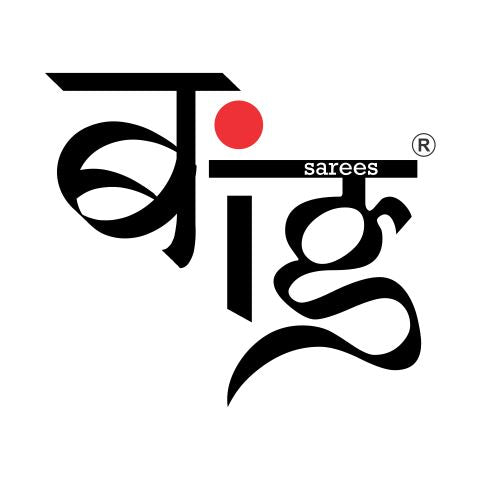
Jamdani Saree: The Timeless Weave of Bengal
Share
The rich heritage of India’s textile industry is incomplete without the mention of the exquisite Jamdani saree. Known for its intricate patterns and delicate craftsmanship, Jamdani sarees are an epitome of luxury, elegance, and tradition. This celebrated weave finds its roots in Bengal, particularly in the state of West Bengal and neighboring Bangladesh. Over centuries, Jamdani sarees have gained immense recognition and popularity, making them one of the most sought-after handloom sarees in the world.
A Glimpse into History
Jamdani weaving traces its origins to the Mughal era, with some historical records dating back to the 3rd century BCE. The term ‘Jamdani’ is derived from the Persian words ‘Jam,’ meaning flower, and ‘Dani,’ meaning vase or container, symbolizing the floral motifs that adorn the fabric. The art flourished during the Mughal period, with royal patronage encouraging artisans to create intricate designs that became synonymous with aristocracy and grandeur.
Historically, Dhaka in present-day Bangladesh was the main center for Jamdani weaving, but after partition, West Bengal, particularly regions like Nadia and Murshidabad, emerged as prominent hubs for this craft. Today, the Bengal Jamdani continues to be a symbol of India’s rich textile heritage.
Varieties of Jamdani Sarees
Jamdani sarees come in various types, each with its own unique patterns, motifs, and weaving techniques. Some of the most famous varieties include:
1. Dhakai Jamdani
This is the most well-known and authentic Jamdani variant, traditionally woven in Dhaka but also found in Bengal. It is characterized by elaborate patterns woven onto sheer fabric, making it one of the finest muslin sarees in the world.
2. Shantipur Jamdani
Produced in Shantipur, West Bengal, this variety is famous for its fine texture and geometric patterns. It is often used for daily wear due to its comfort and lightweight nature.
3. Tangail Jamdani
A popular variant from Bangladesh but also crafted in West Bengal, Tangail Jamdani features broader borders with lotus and floral motifs. These sarees are softer and have a slightly heavier texture than Dhakai Jamdani.
4. Begumpur Jamdani
This variety comes from Begumpur, West Bengal, and is recognized for its loosely woven patterns with contrasting borders. It is an ideal choice for those looking for elegant yet breathable handloom sarees.
The Weaving Process and Technicalities
The process of making a Jamdani saree is intricate and labor-intensive. It involves a handloom weaving technique where motifs are created directly on the loom using the discontinuous weft technique. This requires immense skill and patience, as artisans work meticulously to ensure precision in patterns. The technical aspects of Jamdani weaving include:
-
Material Used: Jamdani sarees are woven with the finest cotton or a blend of cotton and silk.
-
Weaving Method: The supplementary weft technique is used to introduce intricate motifs, giving the appearance of embroidery on the fabric.
-
Time Taken: A single Jamdani saree can take anywhere from a few weeks to several months to complete, depending on the complexity of the design.
-
Color Palette: Traditional Jamdanis are woven in white, beige, and soft pastel shades, but modern adaptations include vibrant colors and metallic threads.
The Artisans Behind the Craft
The skill of Jamdani weaving is passed down through generations, with artisans dedicating their lives to preserving this age-old craft. The weavers, primarily based in Nadia, Murshidabad, and parts of Bardhaman, spend months creating a single masterpiece. Unfortunately, due to low wages and mass-produced alternatives, many artisans are shifting to other professions. However, government initiatives and designer collaborations have played a crucial role in reviving this dying art form.
Raw Materials and Resources
Jamdani sarees are made from the finest quality cotton, sourced locally from Bengal and other parts of India. Some weavers also incorporate silk threads to enhance the texture and appeal of the fabric. The dyes used in traditional Jamdani sarees are natural, ensuring a sustainable and eco-friendly production process.
Popularity and Global Demand
Jamdani sarees are highly valued for their intricate craftsmanship and lightweight texture, making them a favorite among saree connoisseurs worldwide. Indian and international fashion designers have incorporated Jamdani weaves into modern outfits, boosting its global appeal. Several Bollywood celebrities and influencers have also been spotted adorning Jamdani sarees, further driving their demand.
The sarees are exported to various countries, including the USA, UK, Canada, and the Middle East, where they are cherished as luxury ethnic wear. Government initiatives such as the GI (Geographical Indication) tag for Bengal Jamdani have also contributed to its authenticity and demand.
Challenges and the Future of Jamdani Weaving
Despite its popularity, Jamdani weaving faces several challenges:
-
Decline in Weavers: Many artisans are abandoning the craft due to low wages and competition from power looms.
-
High Production Time: The labor-intensive process makes it difficult to meet high demand quickly.
-
Market Competition: Machine-made replicas sold at cheaper rates impact the earnings of genuine weavers.
To ensure the survival of this traditional art, several initiatives have been introduced, such as government subsidies, fair trade practices, and digital platforms promoting handloom products. Many designers are also working closely with weavers to create contemporary adaptations of Jamdani sarees, making them more accessible to modern consumers.
Conclusion
The Jamdani saree is not just a piece of fabric; it is a legacy woven with dedication, artistry, and history. Owning a Jamdani saree is like owning a piece of Bengal’s rich cultural heritage. With growing awareness and efforts to support handloom artisans, Jamdani weaving continues to thrive, ensuring that this timeless art remains a cherished treasure for generations to come.
If you’re looking for a saree that blends tradition with elegance, a Jamdani saree is the perfect choice. Whether for festive occasions, weddings, or everyday wear, this masterpiece of craftsmanship will always make you stand out with grace and sophistication.
Do let us know about your feedback.
Love
Meghna Tewari
https://www.instagram.com/meghna.te/
https://www.facebook.com/meghna.te
https://www.youtube.com/@meghna_te
